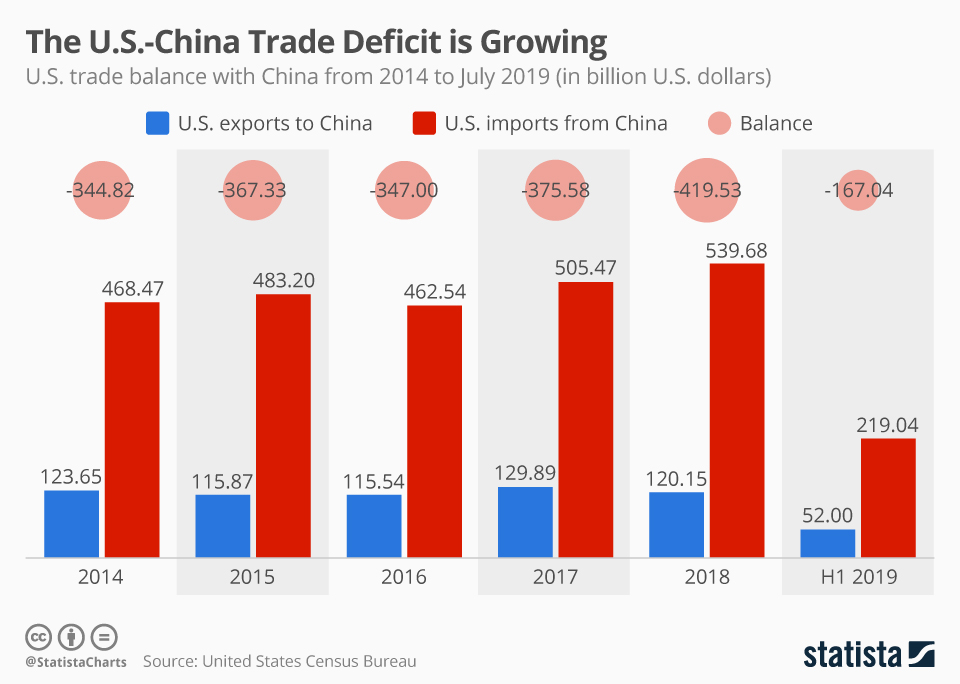US-China Trade Deadlock: An Analysis Of The Breakthrough

Table of Contents
Key Provisions of the Breakthrough Agreement
The so-called "Phase One" trade deal, while celebrated by some as a significant step forward, represents a complex and nuanced agreement with both positive and negative aspects. Let's examine its core provisions:
Phase One Deal Highlights
The Phase One deal, signed in January 2020, included several key commitments from both sides aimed at de-escalating the trade war. These highlights represent a significant step towards addressing some long-standing trade disputes between the US and China, although their full impact remains to be seen:
- Increased purchases of US agricultural goods by China: China committed to significantly increase its purchases of American agricultural products, including soybeans, pork, and corn, over a two-year period. This aimed to address the significant impact of tariffs on US farmers.
- Improved protection for intellectual property rights: The agreement included provisions to strengthen the protection of intellectual property rights in China, a key concern for US businesses operating in the Chinese market. This covers patents, trademarks, and trade secrets.
- Currency manipulation commitments from China: While not explicitly stated as a major component of the Phase One deal, ongoing discussions about currency manipulation were considered part of the broader effort to create fairer trade practices.
- Specific tariff reductions or rollbacks: The US agreed to reduce or roll back some tariffs on Chinese goods, though many remained in place. This represented a significant concession, offering some relief to Chinese exporters.
Areas of Continued Dispute
Despite the Phase One deal, significant areas of disagreement persist, casting doubt on the lasting nature of the breakthrough. These lingering issues threaten to reignite tensions in the future:
- Concerns regarding forced technology transfer: The US remains deeply concerned about China's practices of forcing foreign companies to transfer technology as a condition for market access. This issue remains unresolved.
- Ongoing disputes related to state-owned enterprises: Subsidies and unfair competitive practices by Chinese state-owned enterprises continue to be a major point of contention.
- Subsidies and unfair trade practices: Broader concerns about Chinese government subsidies and unfair trade practices persist, impacting various sectors beyond agriculture and technology.
- The future of the trade relationship beyond Phase One: The long-term implications and the path forward beyond the initial agreement remain uncertain, raising questions about the overall stability of the US-China trade relationship.
Economic Impact of the Breakthrough
The Phase One deal's economic impact is multifaceted and requires a nuanced assessment, considering both short-term effects and longer-term implications.
Short-Term Effects
The immediate impact of the Phase One deal was mixed.
- Impact on US agricultural exports: US farmers initially saw a positive impact with increased Chinese demand for agricultural products.
- Effect on Chinese manufacturing and consumer goods: Some relief was seen for Chinese manufacturers due to tariff reductions, but the overall impact remained complex due to ongoing tariffs.
- Fluctuations in global stock markets: Global stock markets showed a mixed response, reflecting both optimism about reduced trade tensions and concerns about unresolved issues.
Long-Term Implications
The long-term consequences of this trade breakthrough remain uncertain, with several potential scenarios playing out:
- Restructuring of global supply chains: Companies may consider diversifying their supply chains to reduce reliance on either the US or Chinese markets, reshaping global trade patterns.
- Potential for future trade disputes: The unresolved issues could easily reignite tensions and lead to future trade disputes, undermining the stability of the agreement.
- Impact on global economic growth: The overall impact on global economic growth will depend on the extent to which the trade truce holds and the resolution of outstanding disputes.
- Changes in the balance of power between the US and China: The ongoing trade negotiations will likely influence the global economic and political landscape, potentially shifting the balance of power between the two major economies.
Geopolitical Ramifications of the Breakthrough
The US-China trade relationship extends far beyond economics; its impact on global geopolitics is significant.
US-China Relations
The Phase One deal had a mixed effect on overall US-China relations.
- Impact on overall bilateral relations: While the deal eased some trade tensions, underlying political differences remain significant.
- Influence on other global alliances and partnerships: The trade conflict and its resolution influenced other international alliances and partnerships, impacting geopolitical dynamics globally.
- Implications for regional stability (e.g., South China Sea disputes): The overall relationship between the US and China has broader implications for regional stability, particularly in areas like the South China Sea.
Global Trade Order
The US-China trade tensions and subsequent agreements have had a significant effect on the global trade order.
- Impact on the WTO and its rules: The trade war challenged the authority and effectiveness of the World Trade Organization (WTO).
- Potential for increased trade protectionism globally: The trade war between the US and China could embolden other countries to adopt protectionist measures.
- Shift in global economic power dynamics: The ongoing trade negotiations will likely influence the global economic and political landscape, potentially shifting the balance of power between the two major economies.
Conclusion
The US-China trade deadlock, while showing signs of easing with the Phase One deal, remains a complex and evolving situation. The agreement has yielded some positive short-term effects, particularly for US agriculture, but many significant issues remain unresolved. The long-term implications for global trade, economic growth, and the geopolitical landscape are uncertain, depending heavily on the future trajectory of US-China relations. Understanding the complexities of the US-China trade deadlock is crucial. Stay tuned for further updates on the evolving US-China trade situation and the ongoing negotiations for a complete picture. The ongoing impact of the US-China trade war and subsequent negotiations will continue to shape the global economic order for years to come.

Featured Posts
-
 Albanese Vs Dutton A Critical Analysis Of Their Policy Pitches
May 15, 2025
Albanese Vs Dutton A Critical Analysis Of Their Policy Pitches
May 15, 2025 -
 Jayson Tatums X Rays Negative After Wrist Injury In Celtics Victory Over Magic
May 15, 2025
Jayson Tatums X Rays Negative After Wrist Injury In Celtics Victory Over Magic
May 15, 2025 -
 College Van Omroepen Wil Vertrouwen Bij Npo Herstellen
May 15, 2025
College Van Omroepen Wil Vertrouwen Bij Npo Herstellen
May 15, 2025 -
 Opposition Analysis A Deep Dive Into The San Jose Earthquakes
May 15, 2025
Opposition Analysis A Deep Dive Into The San Jose Earthquakes
May 15, 2025 -
 Star Wars 48 Year Old Mystery Planet Is It Finally Happening
May 15, 2025
Star Wars 48 Year Old Mystery Planet Is It Finally Happening
May 15, 2025
